
Fig.1
Francis Le Piper ?1640–1695
The Combat of Hudibras and Cerdon
c.1664–77
Oil paint on panel
235 x 432 mm
T00247
This painting is in oil paint on wooden panel measuring 235 x 432 mm (fig.1). The panel is a single piece of oak, cut tangentially and with uneven thickness (figs.2–3). It is up to 5 mm thick. The grain of the wood runs horizontally.
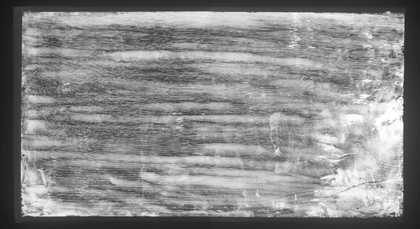
Fig.2
X-radiograph of The Combat of Hudibras and Cerdon
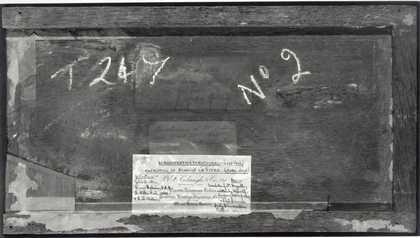
Fig.3
The reverse of The Combat of Hudibras and Cerdon, photographed in black and white
Dendrochronological examination revealed 71 growth-rings in this piece of oak but it was not possible to assign dates to them. This probably indicates that the oak is British because the established data for dendrochronology comes from trees that grew in the Baltic area.1 ‘L-section’ oak battens, about 30 mm wide and 10 mm deep, are attached with glue to the top, bottom and left edges of the panel. Originally there would have been one on the right edge too. The battens appear to be an original framing device and occur in the other three panels in this series (T00248, T00620 and T00621). Owing to its irregular cutting and the presence of the battens, the panel has developed a complex warp and has been subject to much splitting in the past (fig.4). All the splits have been restored and appear stable now.

Fig.4
The Combat of Hudibras and Cerdon photographed in raking light from the top in black and white
The ground is opaque salmon pink, applied thickly to the front of the panel (figs.5–6). Brushstrokes from its application are visible here and there. It is composed of lead white, a range of earth pigments, Cologne earth and verdigris bound together in oil.2

Fig.5
Cross-section through brown paint at the lower left edge, photographed at x260 magnification. From the bottom: salmon pink ground; opaque brown paint; varnish
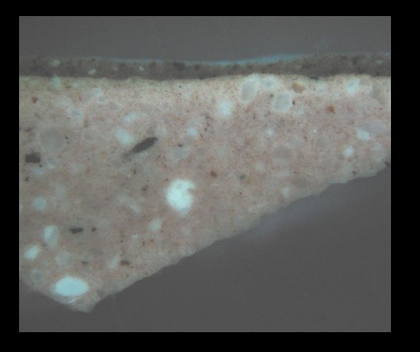
Fig.6
Cross-section through brown paint at the lower left edge, photographed at x260 magnification in ultraviolet light. From the bottom: salmon pink ground; opaque brown paint; varnish
No linear underdrawing is visible with the eye or with infrared (fig.7), but certain features were laid in with reddish brown and green paint, which was allowed to dry before the artist proceeded further (fig.8).
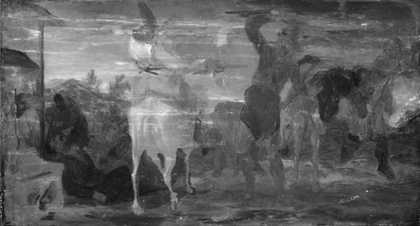
Fig.7
Infrared reflectograph of The Combat of Hudibras and Cerdon
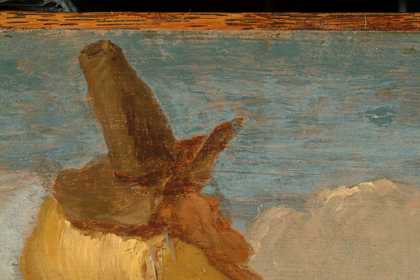
Fig.8
Detail of Hudibras showing reddish brown underpainting
Thereafter the painting appears to have been done in one layer, the colours mixed on the palette and worked into one another wet-in-wet on the prepared surface of the panel with bold, vigorous brushwork and fairly thick, creamy, opaque paint (figs.9–10). Analysis with polarising light microscopy of brown paint from the left background revealed the following pigments: lead white, brown earth colours and Cologne earth. A peak for copper in the EDX analysis (energy-dispersive X-ray analysis) probably signifies the presence of verdigris as a dryer for the oil. Similar analysis of the blue sky revealed lead white, ultramarine and smalt.
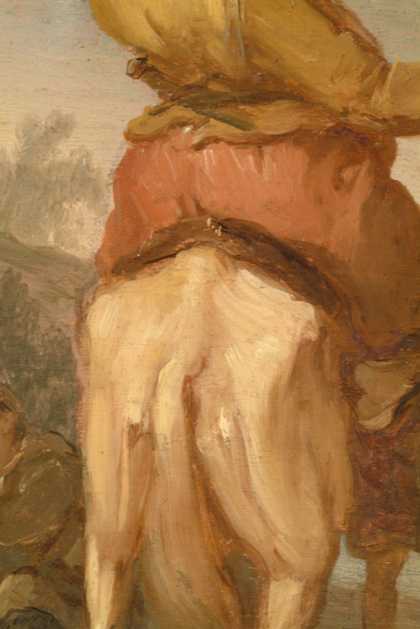
Fig.9
Detail of brushwork in the horse
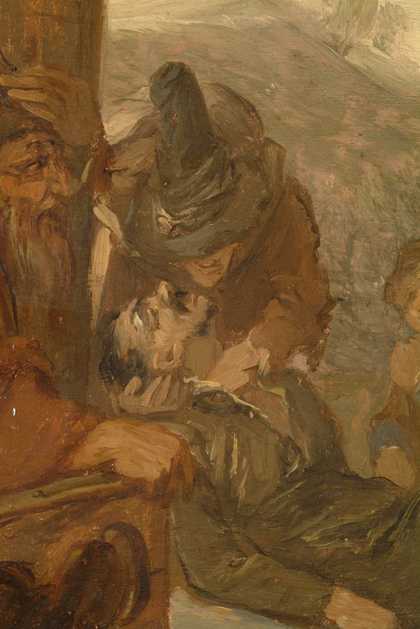
Fig.10
Detail of brushwork in the figures
The painting has needed no significant treatment since acquisition by Tate in 1959. The varnish is a natural resin.
November 2003
